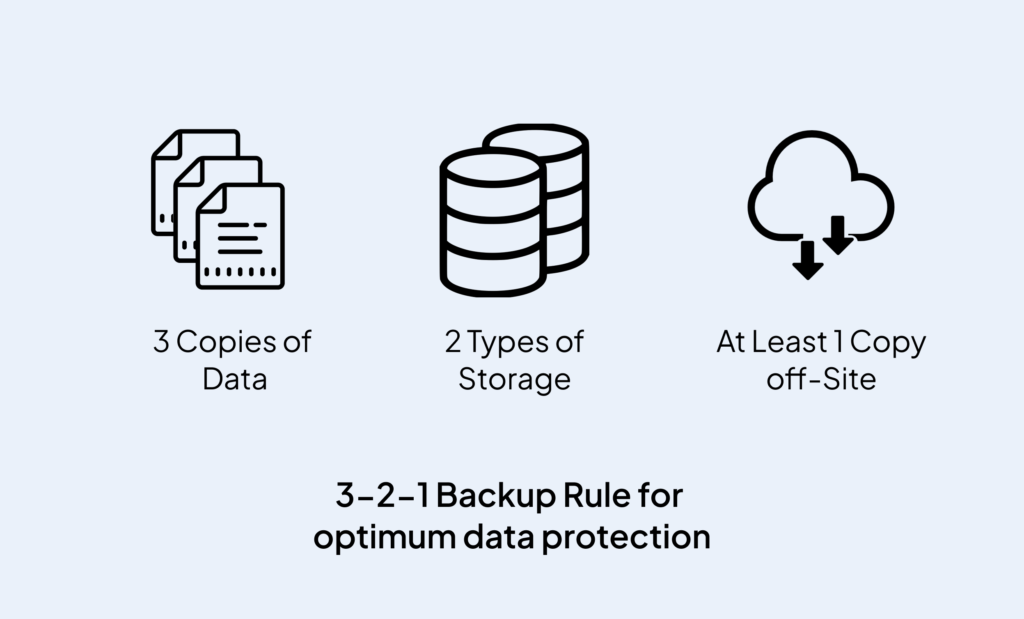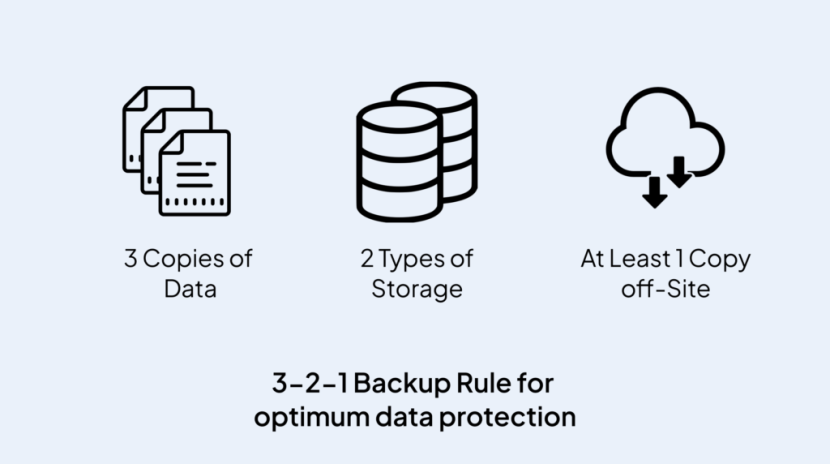In the digital era, where data has become an invaluable asset, safeguarding its integrity and accessibility is paramount. The 3-2-1 rule of data backup serves as a robust strategy to ensure the resilience of your critical information in the face of potential data loss scenarios.
Understanding the 3-2-1 Rule

The 3-2-1 rule dictates that for every crucial dataset, you should maintain:
- Three (3) copies of your data: This redundancy ensures that even if one or two copies are compromised, you still have a backup to restore from.
- Two (2) different storage media: Store your backups on separate devices or platforms, such as a local hard drive and a cloud storage service. This diversification reduces the risk of losing all your data due to a single hardware failure or disaster.
- One (1) off-site backup: Keep at least one copy of your data in a physical location separate from your primary storage and backup locations. This measure provides protection against catastrophic events like fire, flood, or theft.
Benefits of the 3-2-1 Rule
Implementing the 3-2-1 rule offers several significant advantages:
- Enhanced Data Protection: By having multiple copies of your data, you minimize the risk of permanent data loss in case of hardware failure, software corruption, or human error.
- Reduced Downtime: In the event of data loss, having a readily available backup allows you to restore your data quickly and minimize business disruptions.
- Disaster Recovery: An off-site backup ensures that your data remains accessible even in the face of a catastrophic event that affects your primary and backup locations.
- Peace of Mind: Knowing that your data is secure and easily recoverable provides peace of mind and reduces the stress associated with potential data loss.
Implementing the 3-2-1 Rule
To effectively implement the 3-2-1 rule, consider the following steps:
- Identify Critical Data: Determine which datasets are essential to your business operations and personal life.
- Select Storage Media: Choose a combination of local hard drives, external storage devices, and cloud storage services to store your backups.
- Automate Backups: Set up automated backup processes to ensure regular and consistent data protection.
- Verify Backups: Regularly test your backups to ensure they are complete and recoverable.
- Review and Update: Periodically review your backup strategy and make adjustments as needed to accommodate changes in your data and storage requirements.
Conclusion
The 3-2-1 rule of data backup is a cornerstone of data protection best practices. By adhering to this strategy, you can safeguard your valuable data, minimize the impact of data loss events, and ensure the continuity of your business operations. Remember, data backup is not an option but a necessity in today’s digital landscape. Implement the 3-2-1 rule today and experience the peace of mind that comes with knowing your data is secure. Let me know if you want some help backing up your data. Contact Dave at One Stop Support LLC.

